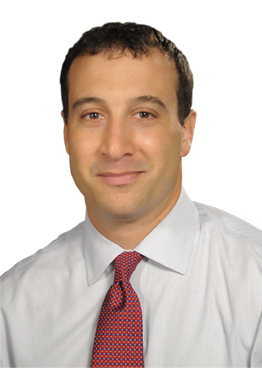
A University of Louisville cardiologist and data scientist stressed the need for more accurate heart disease risk-prediction models in an editorial published in the Annals of Internal Medicine this week.
The editorial by Andrew DeFilippis, M.D., director of Cardiovascular Disease Prevention at the UofL School of Medicine and a cardiologist with UofL Physicians, and Patrick Trainor, a data scientist on DeFilippis’ research team, accompanied a study of a new risk prediction model that could improve the guideline-recommended scoring systems for who is at risk.
That study, by a group of researchers from Stanford University, the University of Michigan, the University of Washington, the University of Mississippi and Harvard Medical School, showed a widely used scoring system that helps physicians identify who is at risk for heart disease may inaccurately estimate risk, especially for certain patients, such as African-Americans. The scoring system, last updated in 2013, is recommended by the American College of Cardiology and the American Heart Association.
DeFilippis said that accurate risk predication is needed to effectively balance the risks and benefits of medicines used to prevent heart disease, and is important to help doctors decide who needs a statin, blood pressure medications or aspirin.
“Doctors must balance the risk of medication side effects with the risk of disease,” DeFilippis said. “Medications are expensive, and unnecessary treatment also costs the healthcare system, which is not an endless resource.”
DeFilippis has led efforts to evaluate cardiovascular disease risk prediction scoring systems, analyzing how they perform using data from clinical studies. He said the while this new study is helpful, risk scoring must continue to evolve based on demographic and societal trends and the availability of new biomarkers for assessing cardiovascular disease.
“Risk prediction is of tremendous benefit,” DeFilippis said. “The guideline-recommended scoring models were created from data collected from groups of patients decades ago. This new study used more modern patient groups and new methods for making the risk calculations.”
He noted that as heart disease is the leading killer of Americans, assessing risk is a critical issue. And while the calculator isn’t perfect, “there is no question these calculators are better than the eyeball test and certainly outperform a physician just saying ‘I think this person is high or low risk’ after looking at them.”
In previous studies, DeFilippis and other researchers at the University of Louisville, Johns Hopkins University and the University of Washington looked at the 2013 scoring system, along with three others, in a study of different ethnic groups. They collected information on patients who began participating in 2000-2002 and followed them for 10 years, evaluating the accuracy of the 2013 scoring model and publishing the results in 2015 in the Annals of Internal Medicine. That study found that the guideline-recommended calculator overestimated a person’s risk.
A 2017 study in the journal The BMJ (formerly the British Medical Journal) noted more than one in five Americans between the ages of 40 and 75 takes a statin. It has been hotly debated who should take statins, and several studies have questioned the accuracy of the risk calculator.
DeFilippis said the new study published this week rebuilds the risk score using a different statistical approach. It re-analyzed data from participants in multiple large studies. The new risk prediction model was shown to make more accurate predictions of risk for many patients, especially for some ethnicities, though further validation is needed.
Because of the need to continually update data, the team in the study that was published this week made the statistical model and computer code public so other scientists could evaluate them.
DeFilippis said that ultimately, “the decision on who should take statins or other medications to reduce risk should be a conversation between doctor and patient.”
While the guidelines still generally recommend them for some groups with a particular score, he said treatment should be individualized.



























